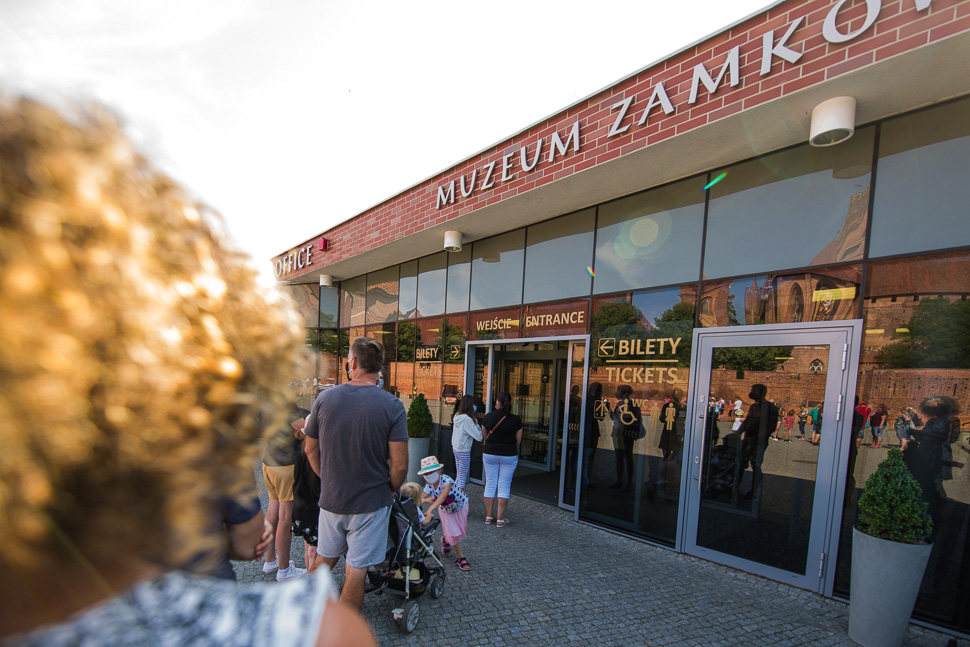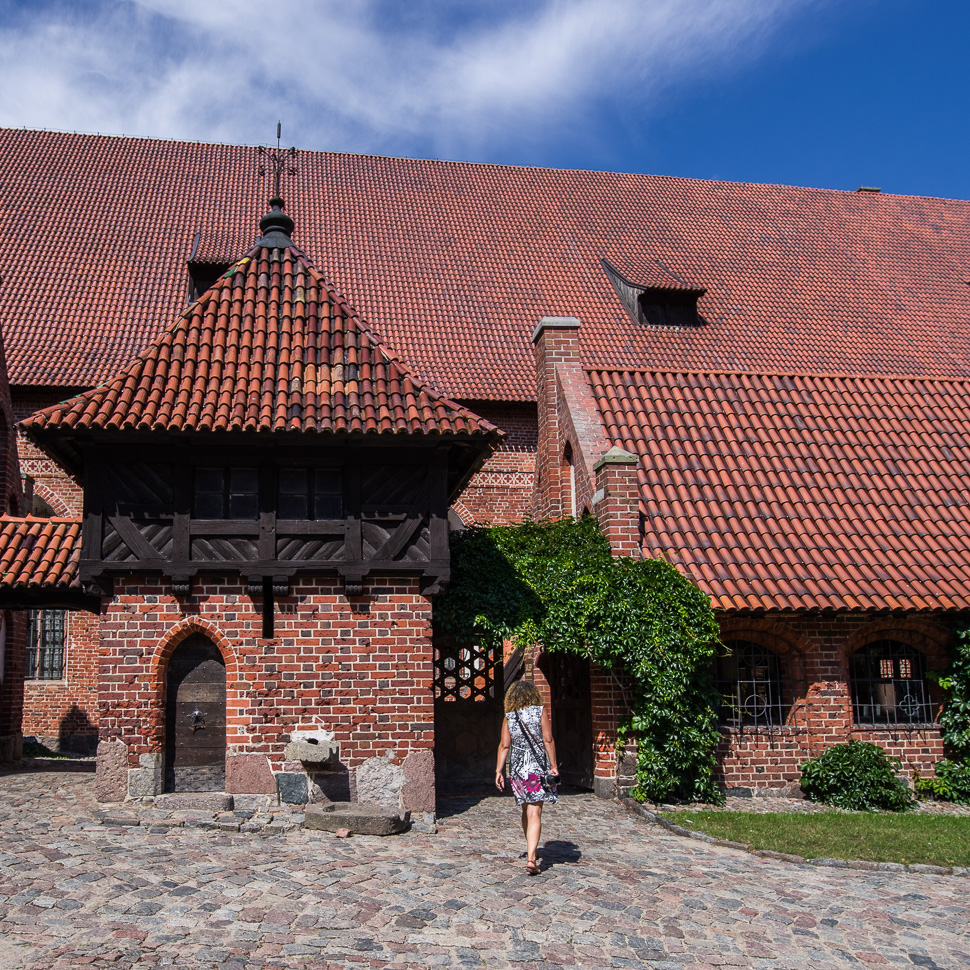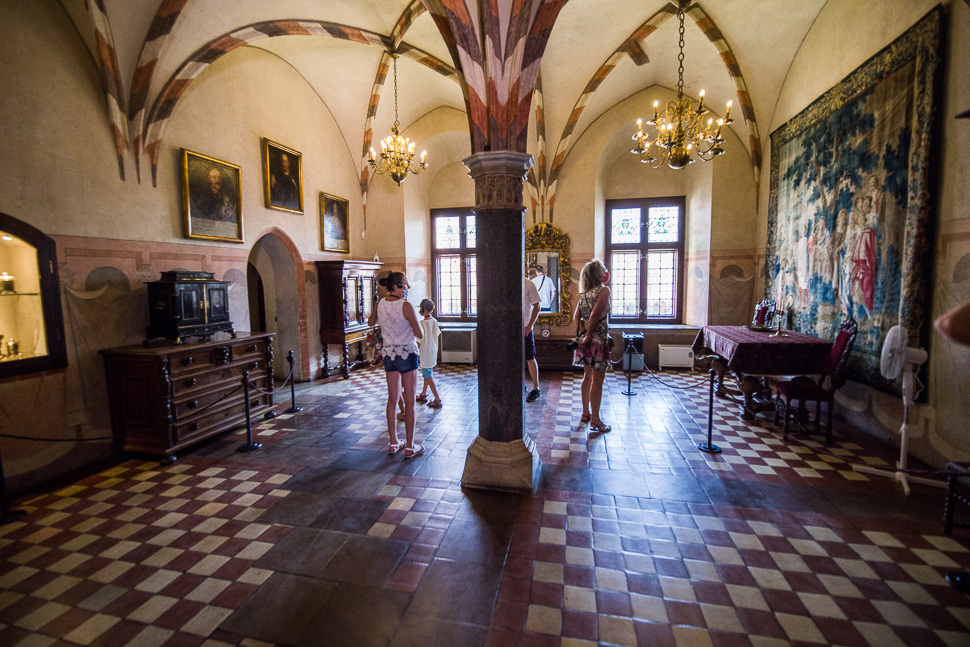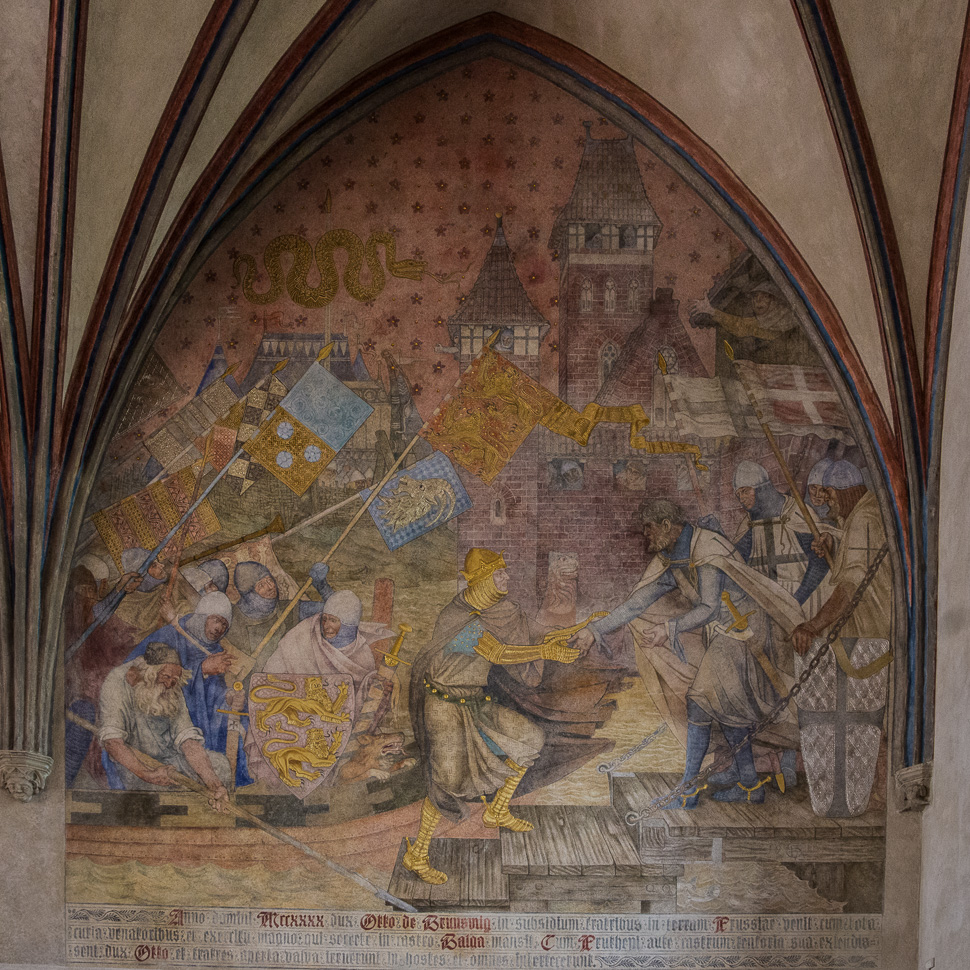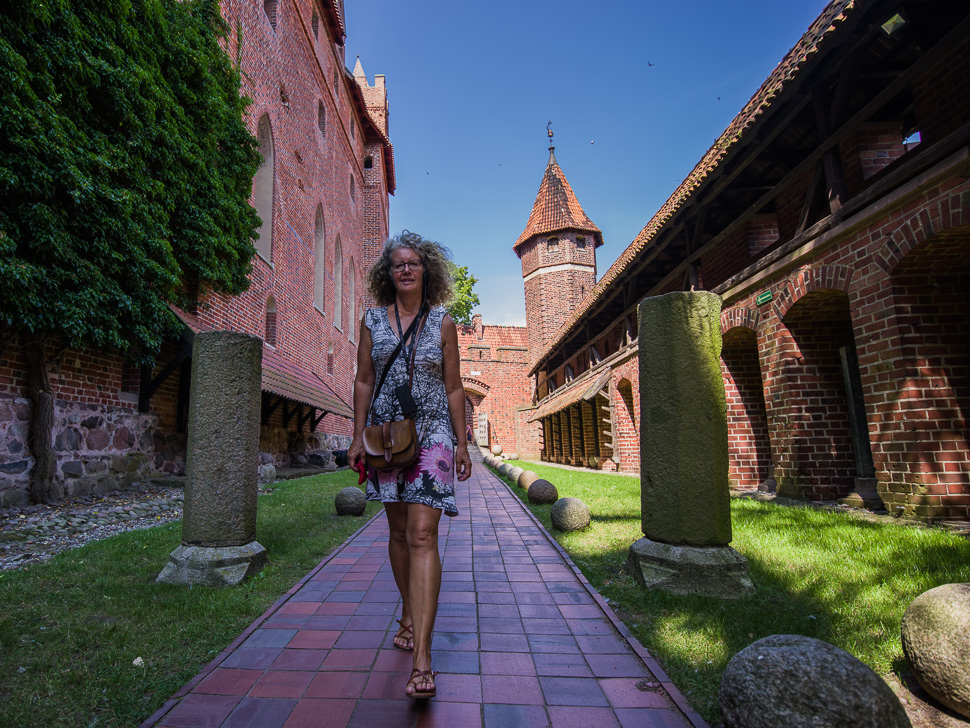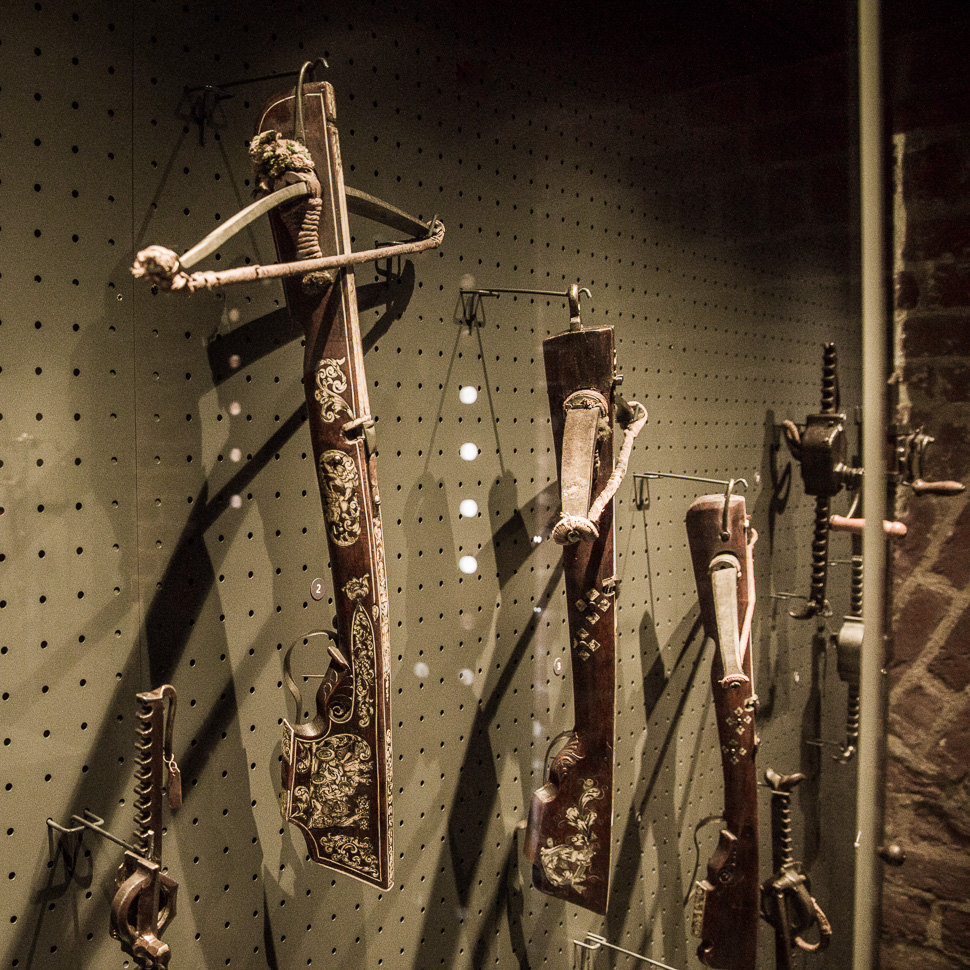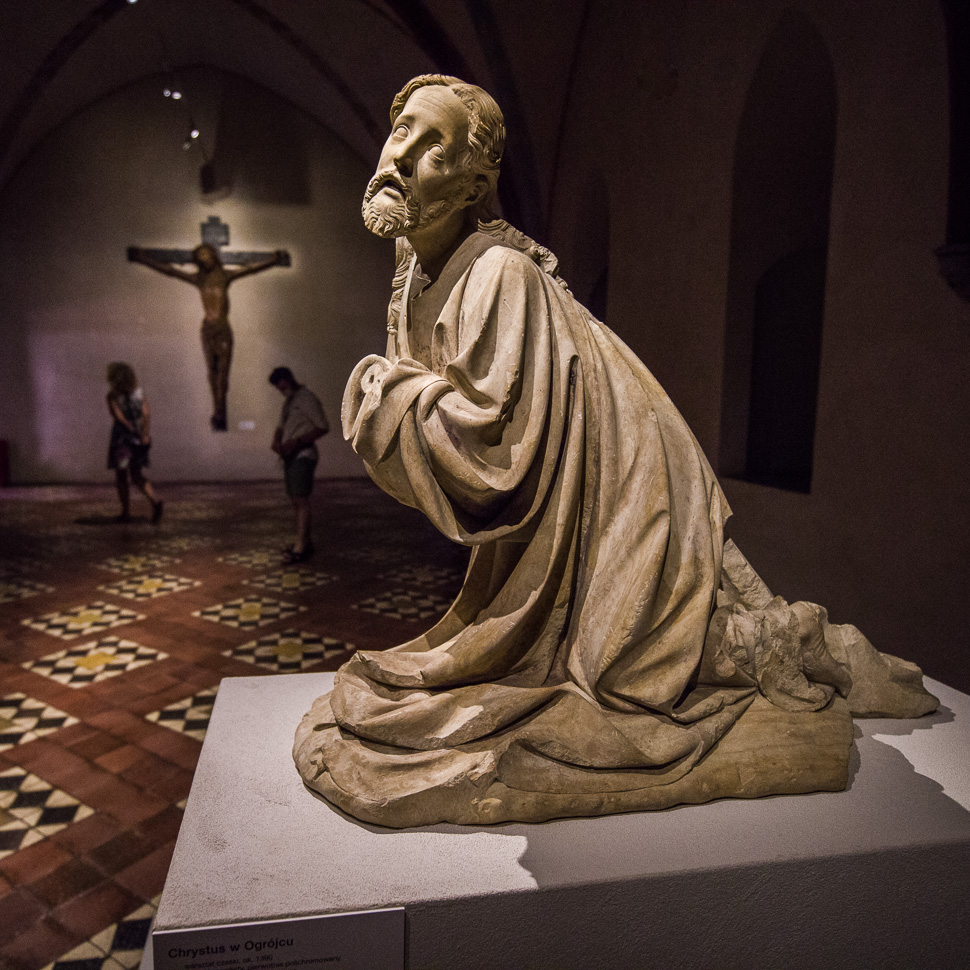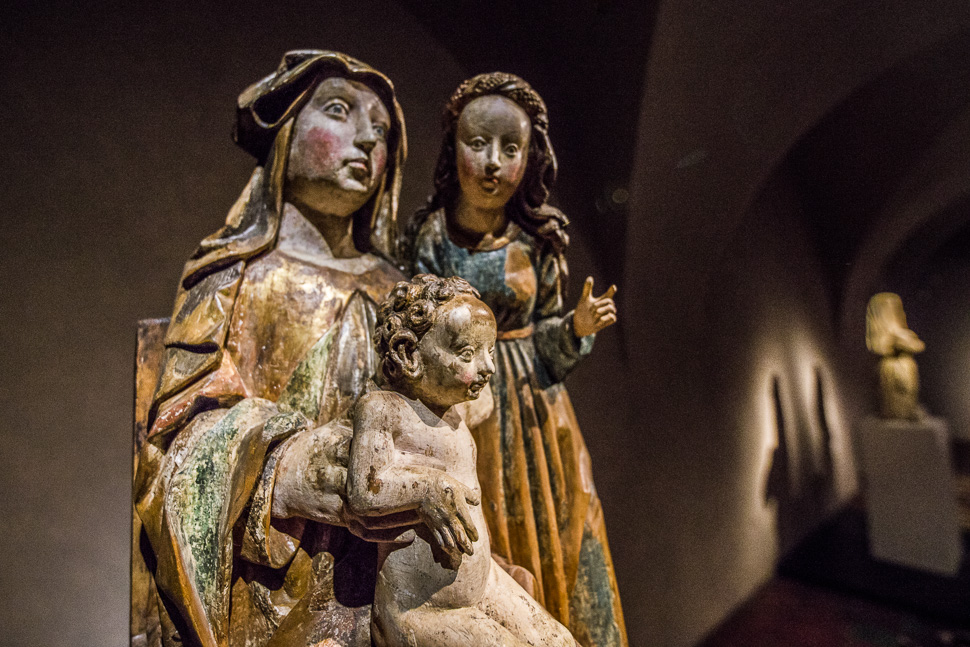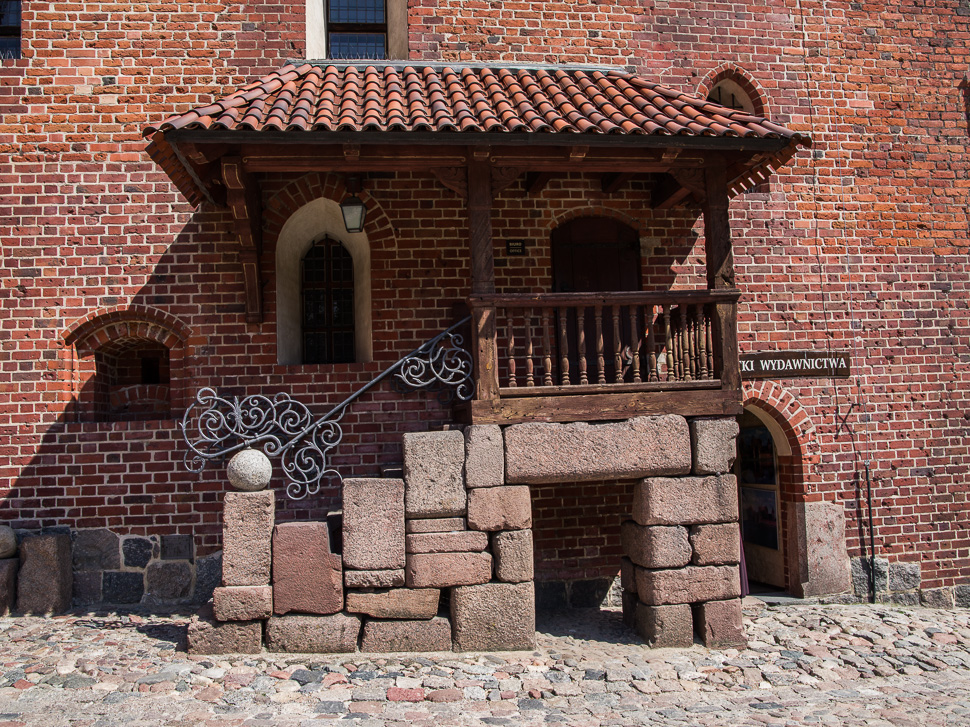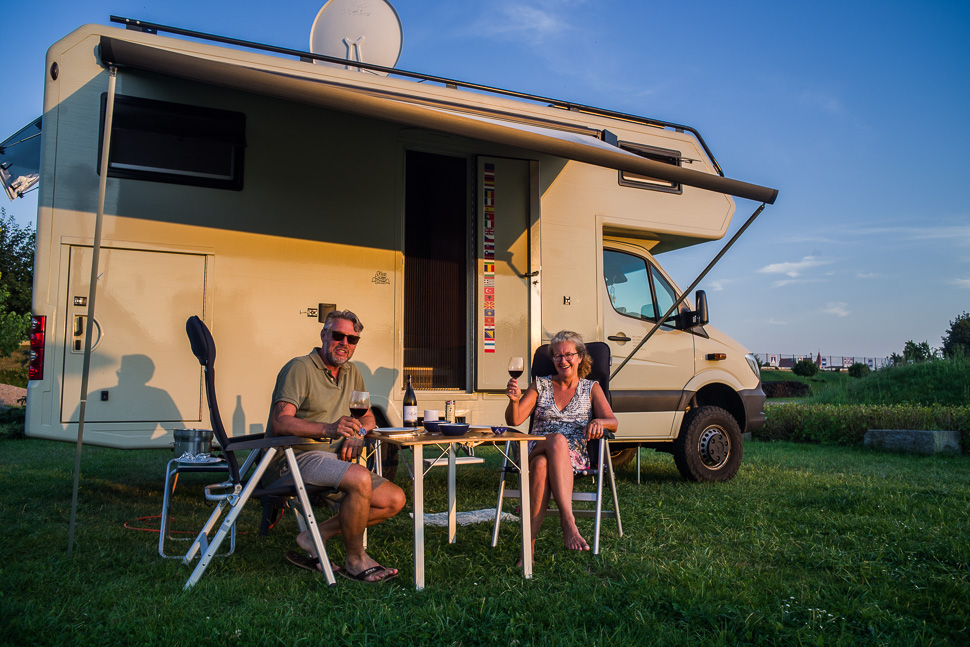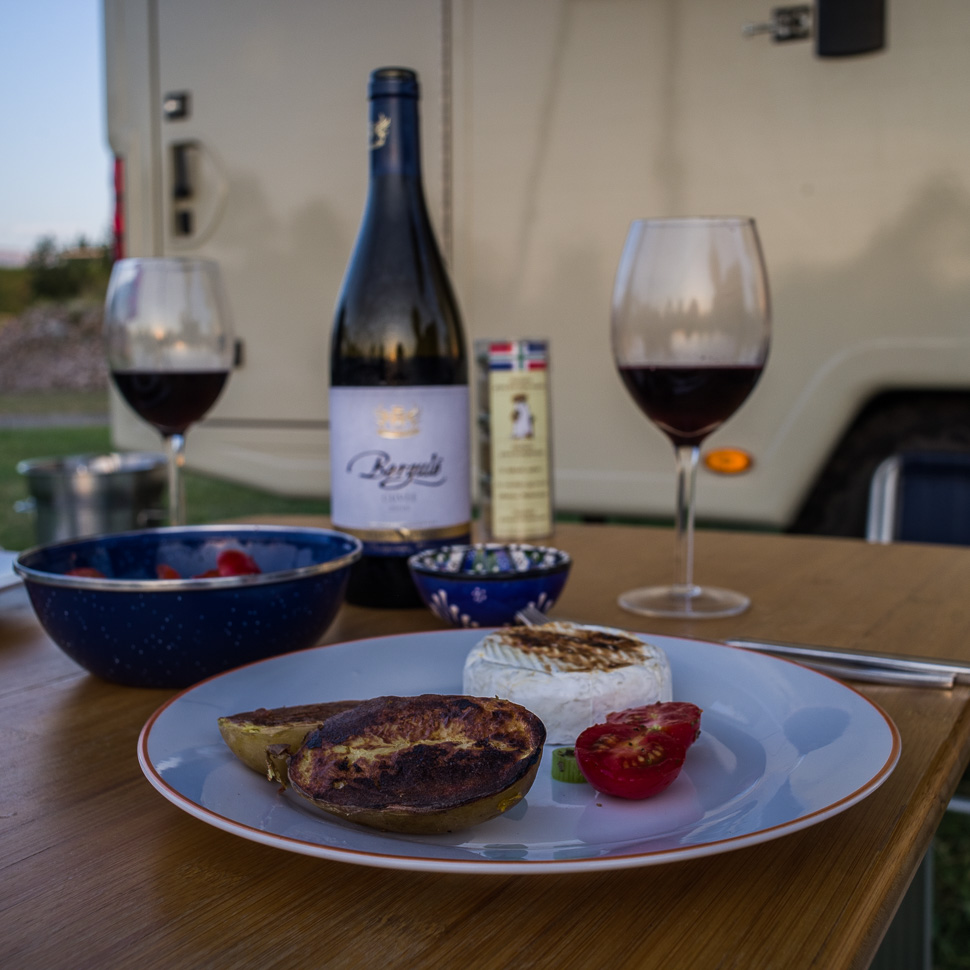With Malbork we had reached the once very powerful headquarter of the Teutonic Order (Deutscher Orden) and its mighty fortress. We were very impressed by this huge and luxurious castle of some crusaders we had not really known much about before our visit to this area of Poland.
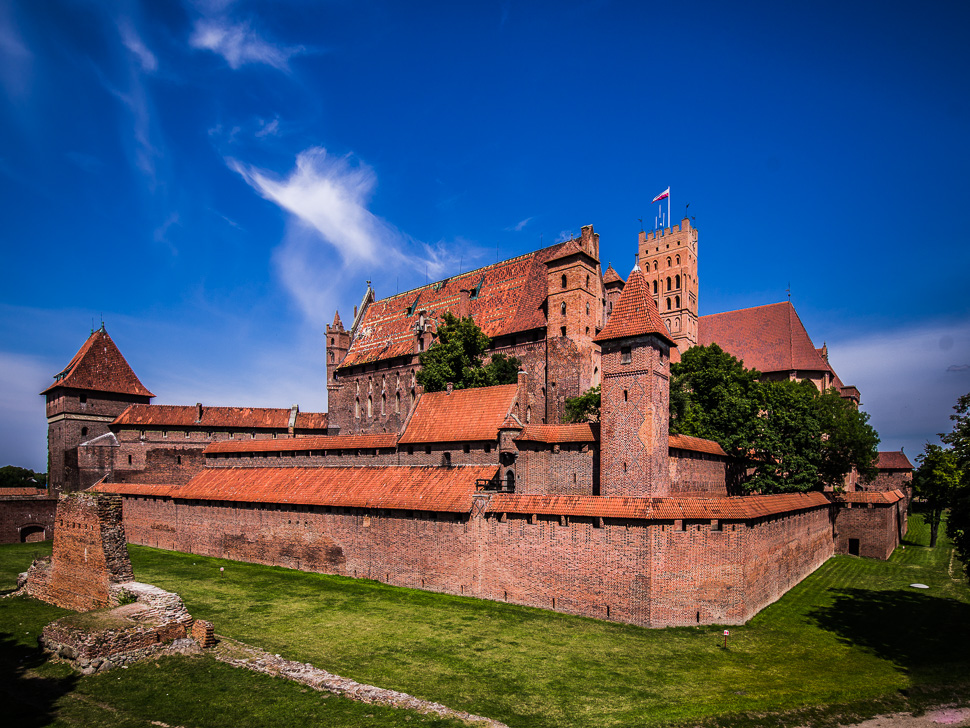 |
| Malbork Castle |
We had reached Malbork south of Gdańsk the day before and stayed at a lovely camping around a lake just opposite the castle. Already in the morning people were waiting in line to get their tickets and audio guides.
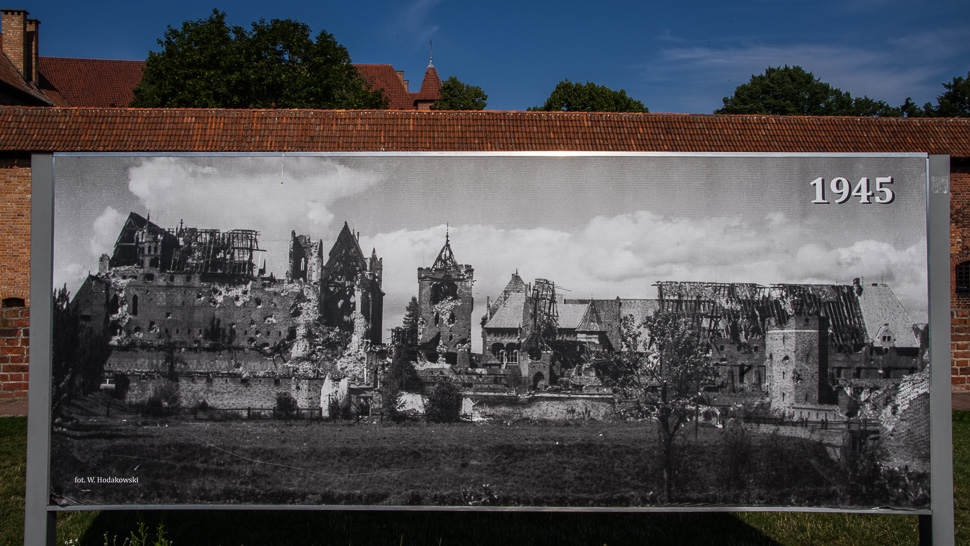 |
| The destruction during WWII was enormous |
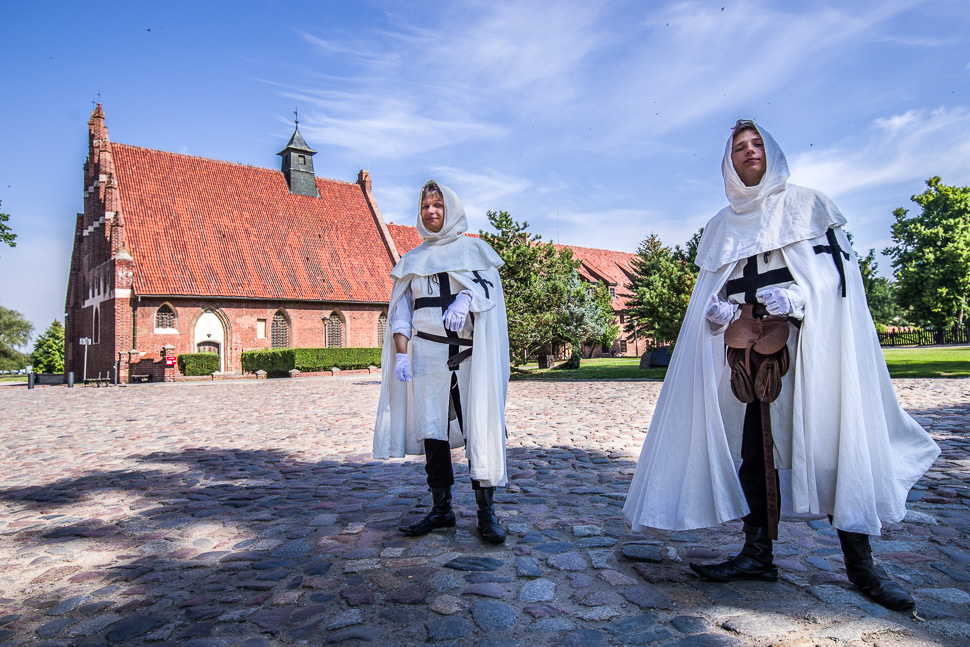 |
| Young “friars” awaiting you at the entrance |
The Castle of the Teutonic Order was built in the 13th-century by the Teutonic Knights, a German Catholic religious order of crusaders, in a form of an Ordensburg fortress. The order named it Marienburg in honour of Mary, mother of Jesus.
The Teutonic Order was founded in Acre (present-day Israel). When this last stronghold of the Crusades fell to Muslim Arabs, the Order moved its headquarters to Venice before arriving in Prussia. Today the Order still exists and has its headquarters in Vienna.
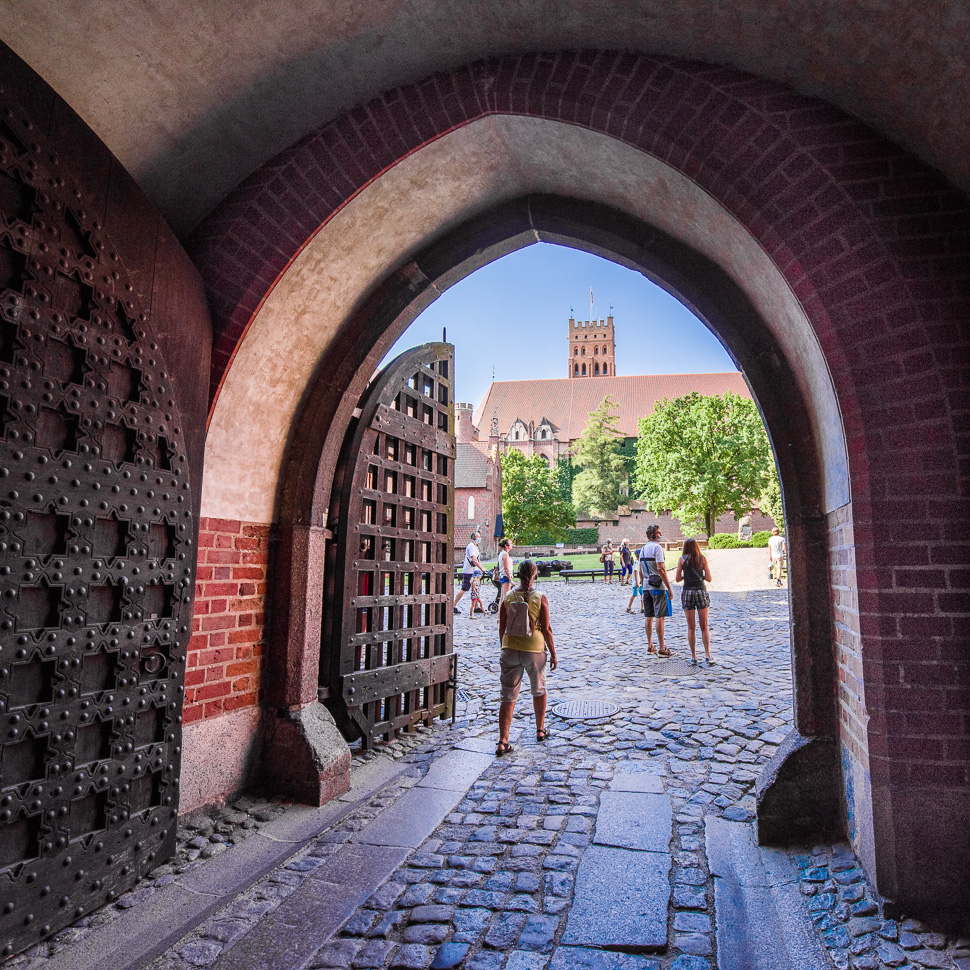 |
| Entering through the second wall of defence |
Malbork consists of three castles – the High, Middle and Lower Castles, separated by multiple dry moats and towers. The castle once housed approximately 3,000 “brothers in arms”. The outermost castle walls enclose 21 ha which makes it one of the largest castles in Europe. It was never conquered but sold in 1457 to the king of Poland when the order couldn’t pay their mercenary soldiers any more.
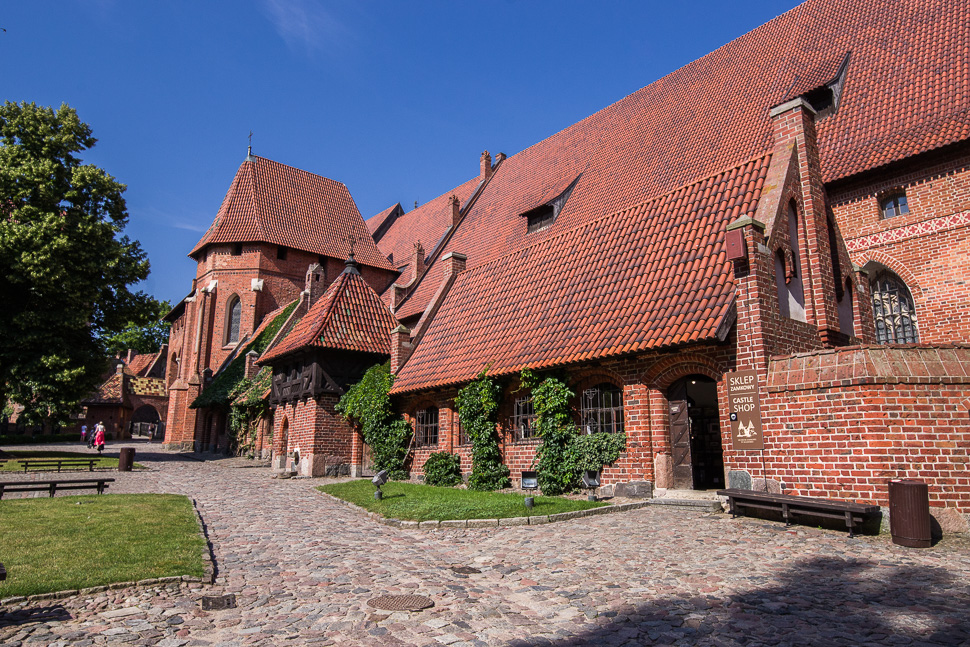 |
| Large courtyard of the Middle Castle |
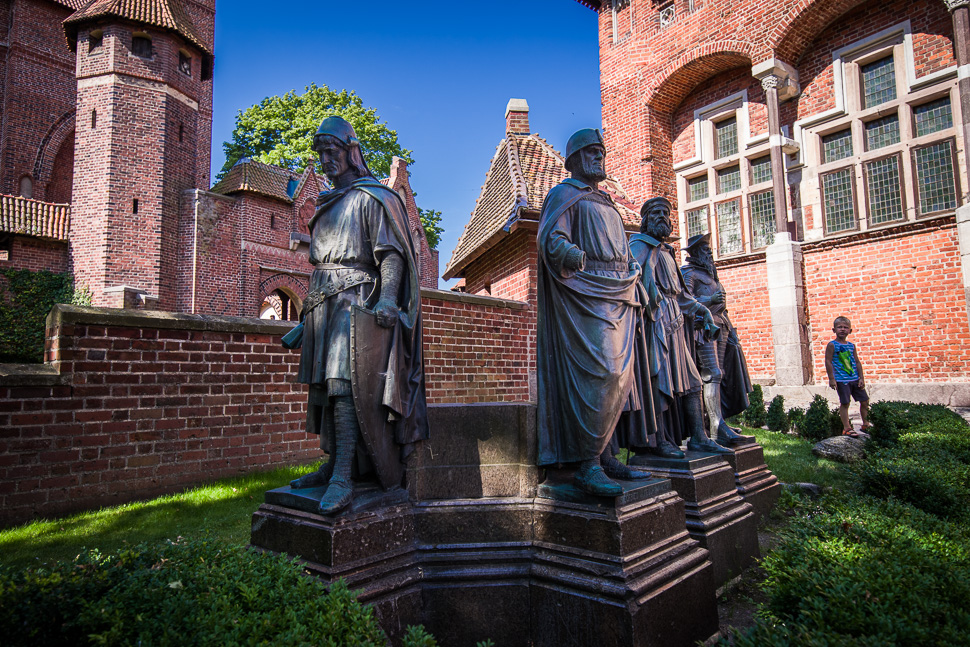 |
| Grand Masters of the Teutonic Knights |
The favourable position of the castle on the river Nogat allowed easy access by barges and trading ships arriving from the river Vistula (Weichsel) and the Baltic Sea. During their governance, the Teutonic Knights collected river tolls from passing ships, as did other castles along the rivers. They controlled a monopoly on the trade of amber. When the city became a member of the Hanseatic League, many Hanseatic meetings were held here.
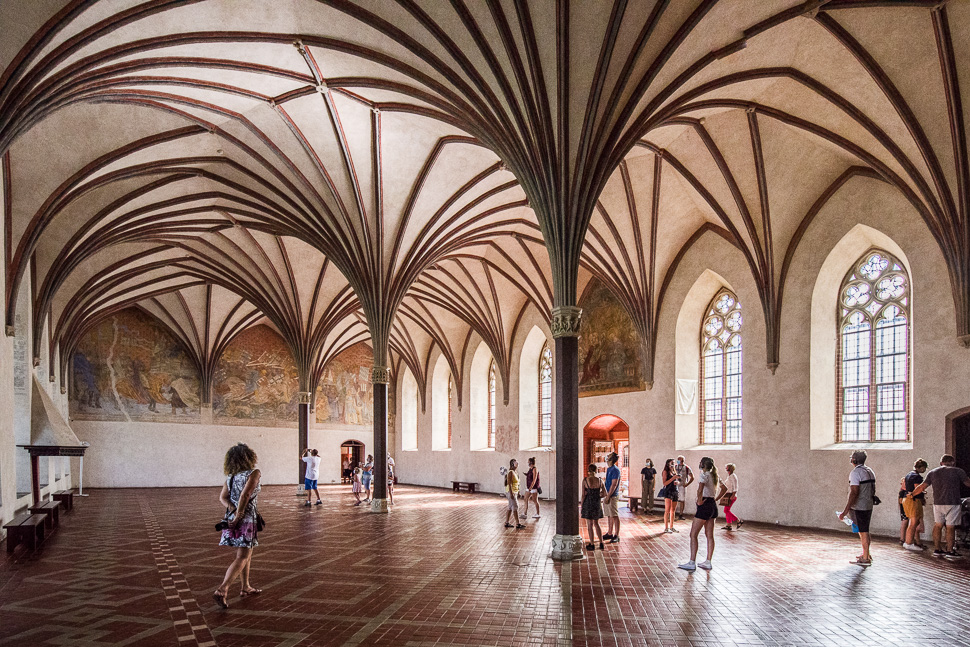 |
| Refectory at the Middle Castle |
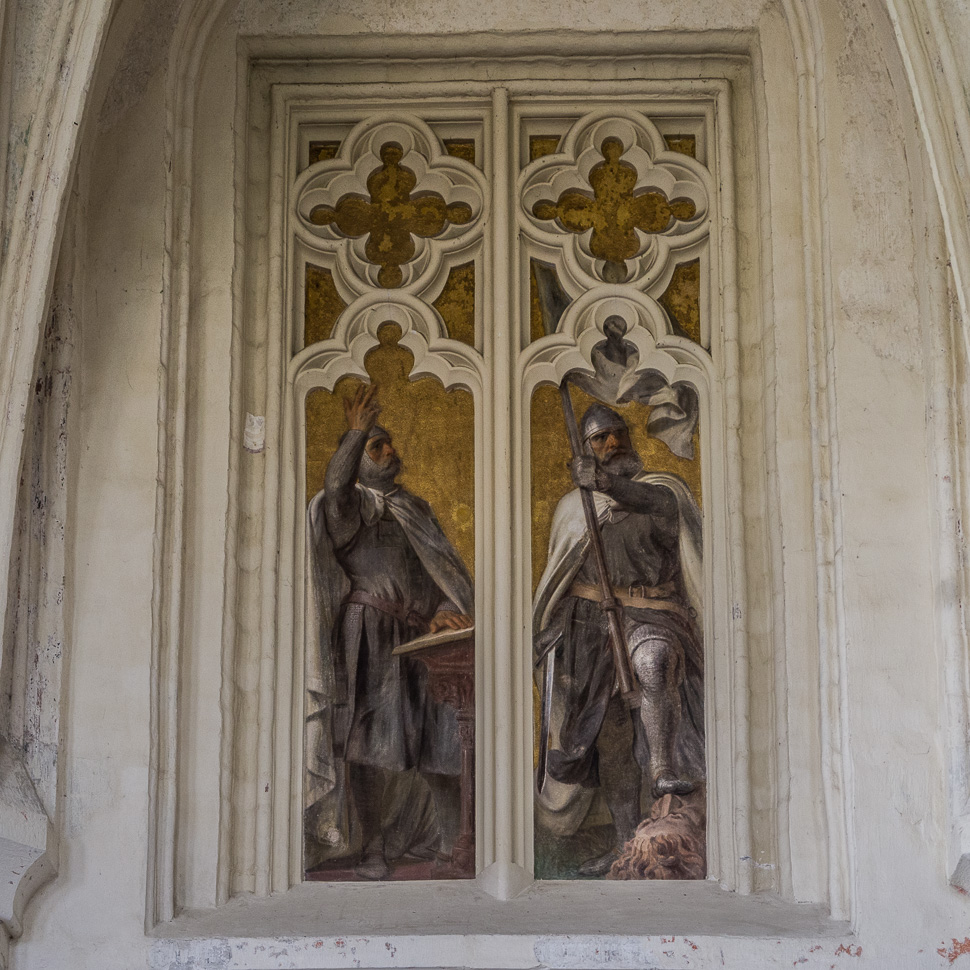 |
| Grand Masters of the Teutonic Order at the summer refectory |
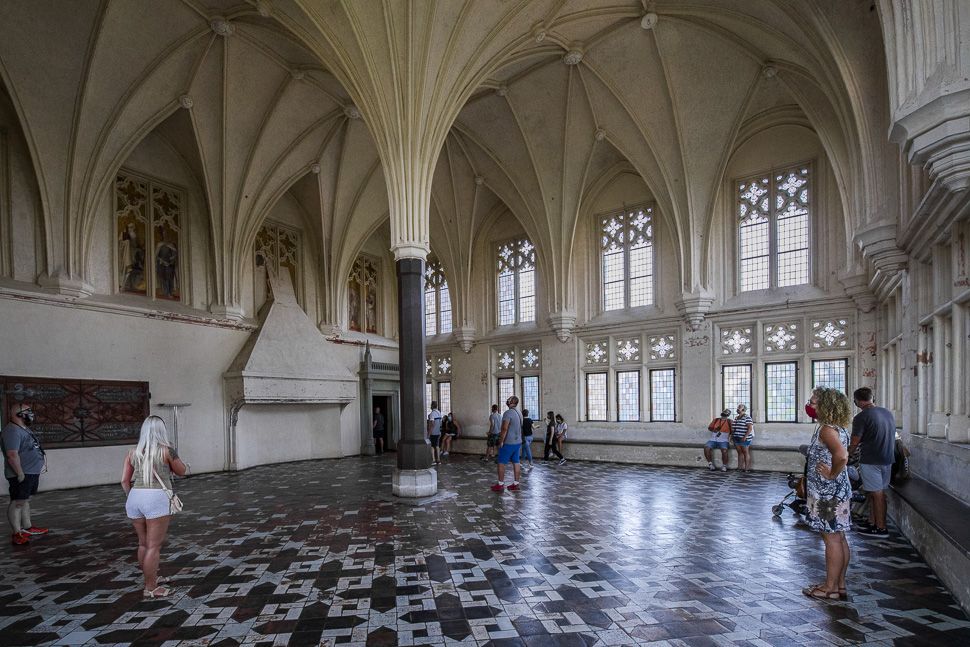 |
| Summer refectory |
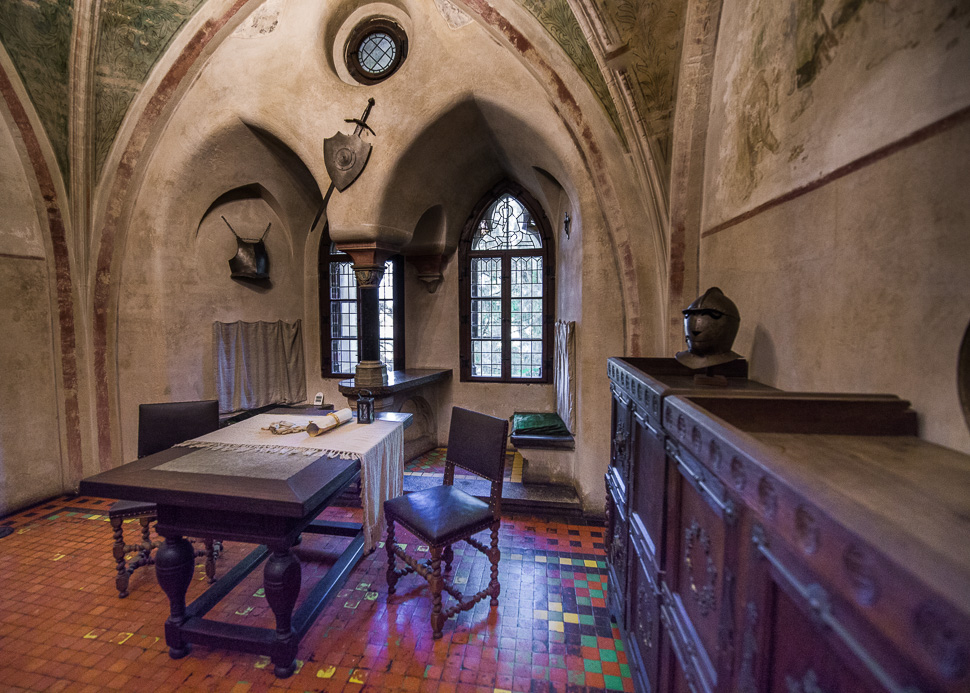 |
| Office for the Grand Master |
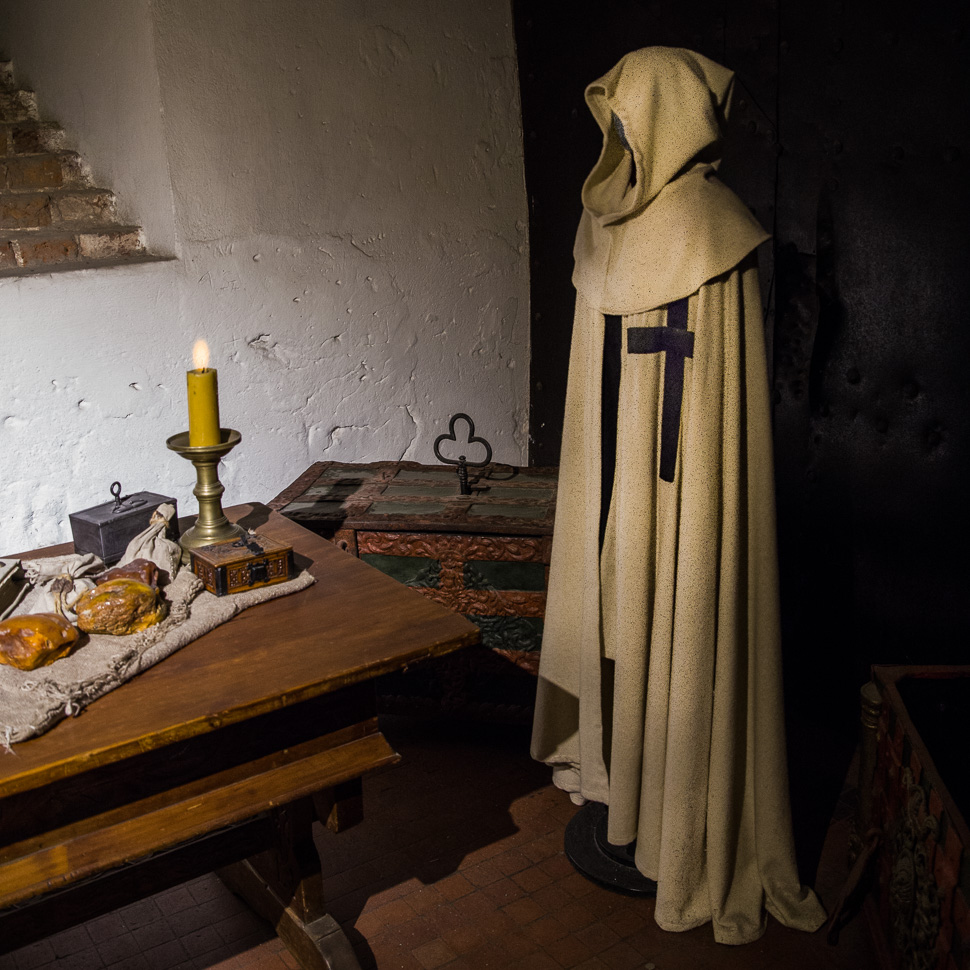 |
| Rules of the order: poverty, obedience and celibacy |
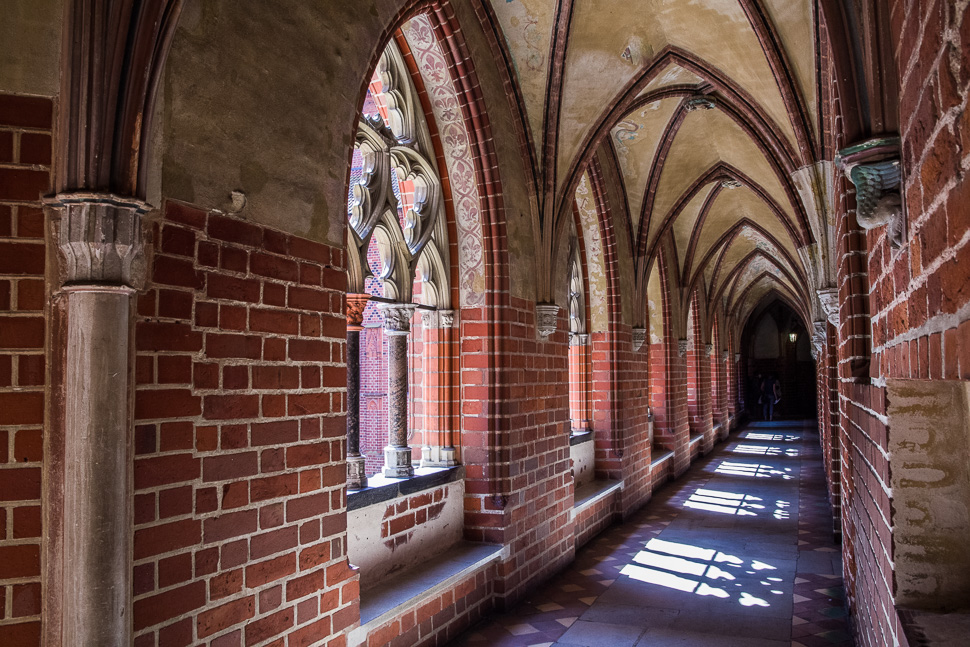 |
| Inner cloister |
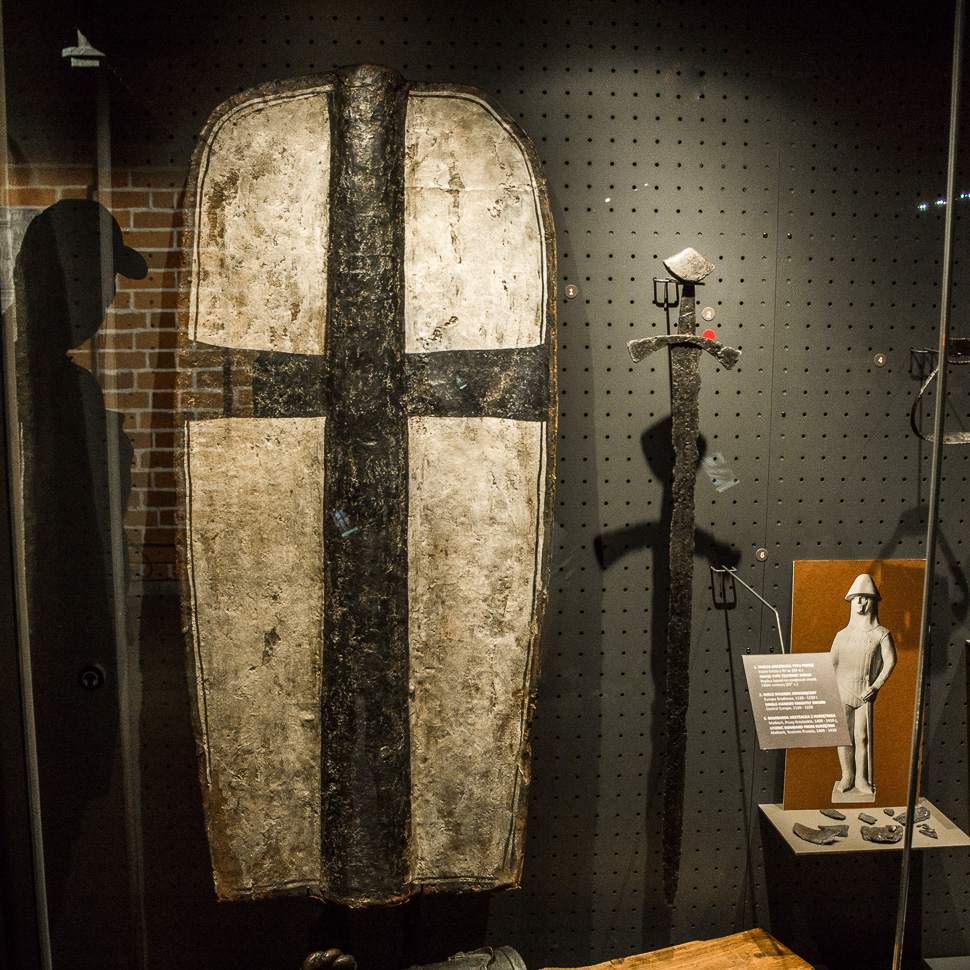 |
| Colors of the Teutonic Order – the black cross on white ground |
The castle was thoroughly renovated since 1945, with the last renovations ending in 2016. Today it is a joy to explore the many impressive parts of the castle. The provided audio guide was the best we ever had used, giving the right amount of information automatically depending on our position guiding us perfectly through all the parts of the castle. In parts of the castle exhibitions on weaponry, religious art and amber make the visit even more fascinating.
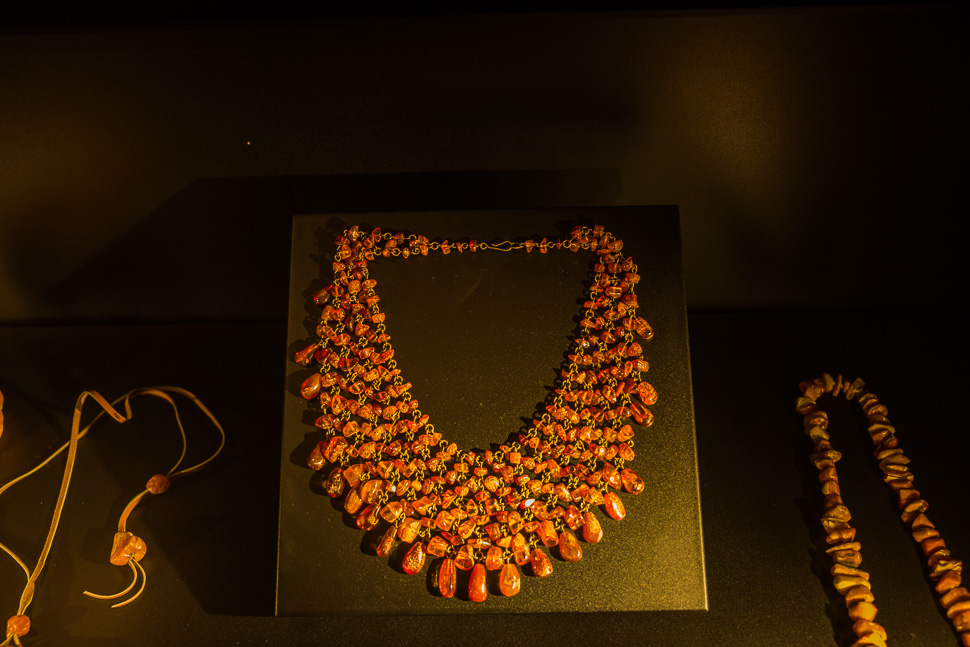 |
| Amber necklace |
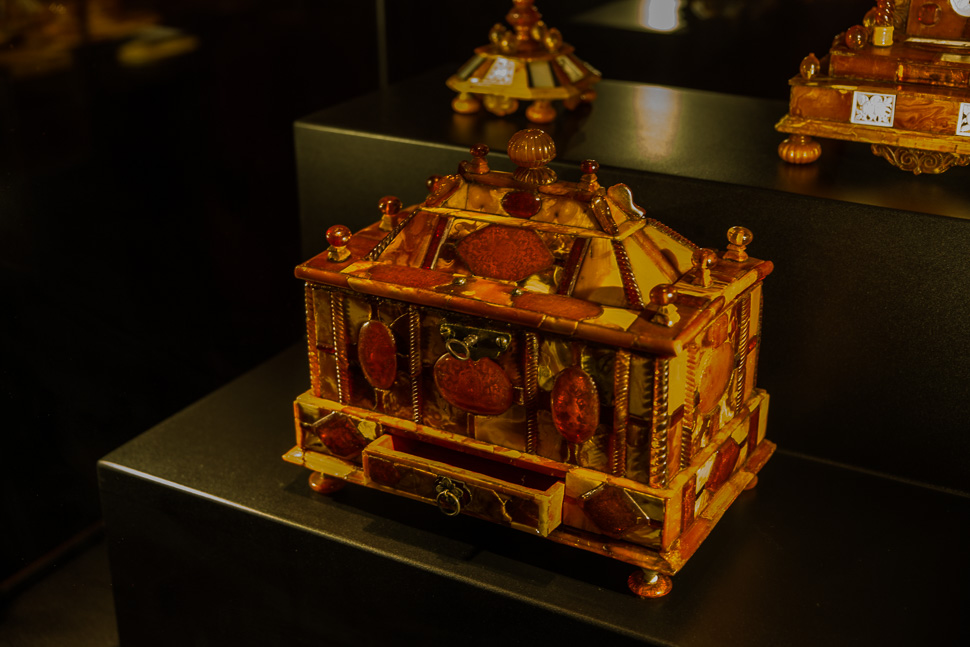 |
| Amber treasure chest |
Special about the Teutonic Order is that they managed to be master of their own country. During the Northern crusade they conquered Prussia and later extended their territory eastwards. The Golden Bull of Rimini, a decree issued by Emperor Frederick II in Rimini, granted and confirmed the privilege of territorial conquest and acquisition for the Teutonic Order in Prussia.The state of the Teutonic Order existed from 1226 until 1525. The capital was first Marienburg (Malbork) and later Königsberg (Kaliningrad).
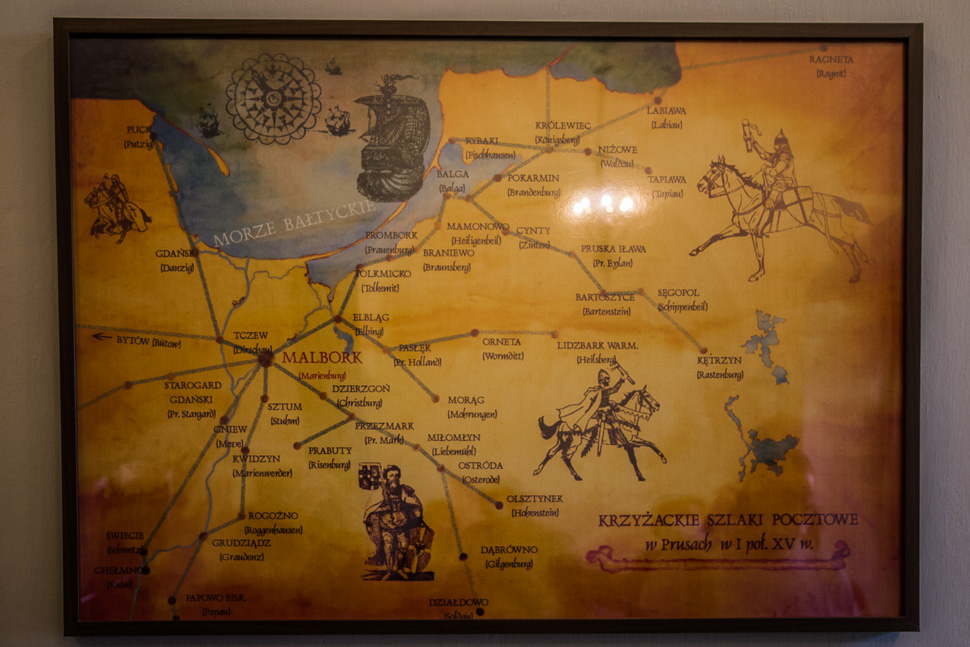 |
| Post routes |
The control over the state ruled by the Teutonic Order was enhanced through a fast contact system by riders, who could exchange horses regularly and therefore reach their destination much faster.
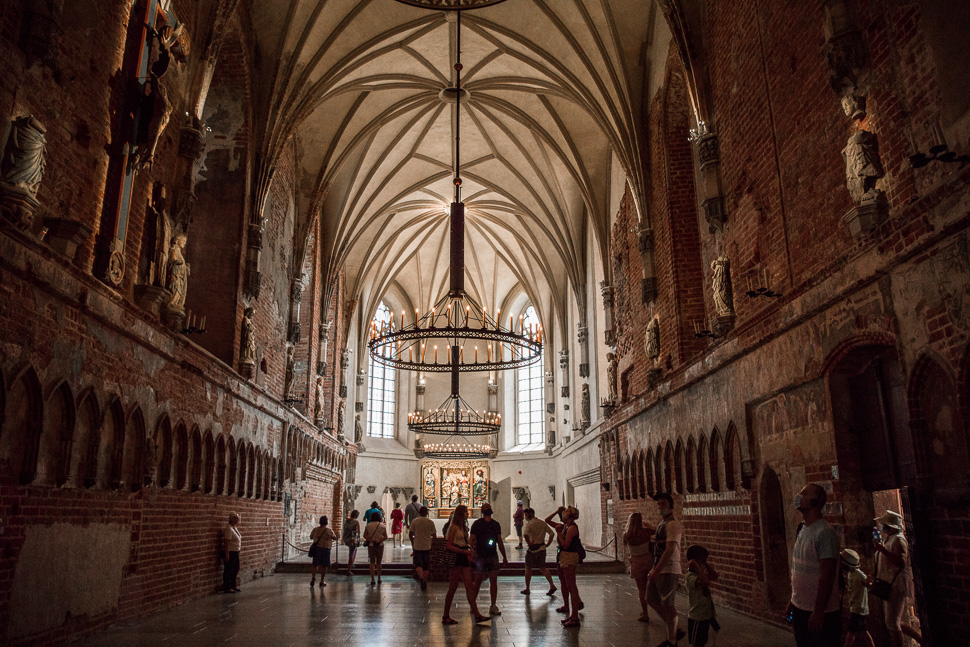 |
| Blessed Virgin Mary Church |
The church had just been restored before WWII but was heavily damaged again during the war. The latest restorations ended in 2016, giving it a very special atmosphere of old and new.
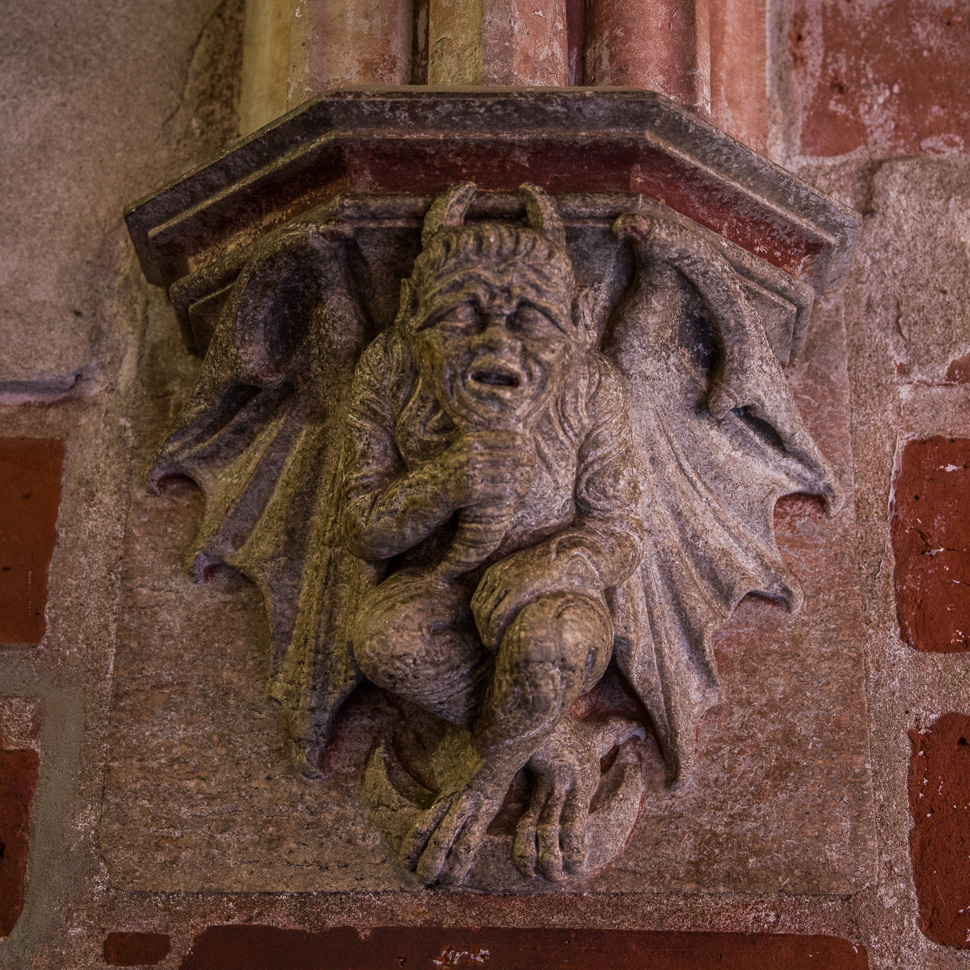 |
| Devil showing the way to the loo |
The castle had some luxurious features such as heating in the most important rooms, with warm air coming through openings in the floor from an oven below. Only two persons in the castle had the privilege of their own toilet: the grand master and the head cook. For all the other people in the castle there was a separate tower called dansker which you could reach over a long corridor. There the toilets were above the moat and a good distance from the castle.
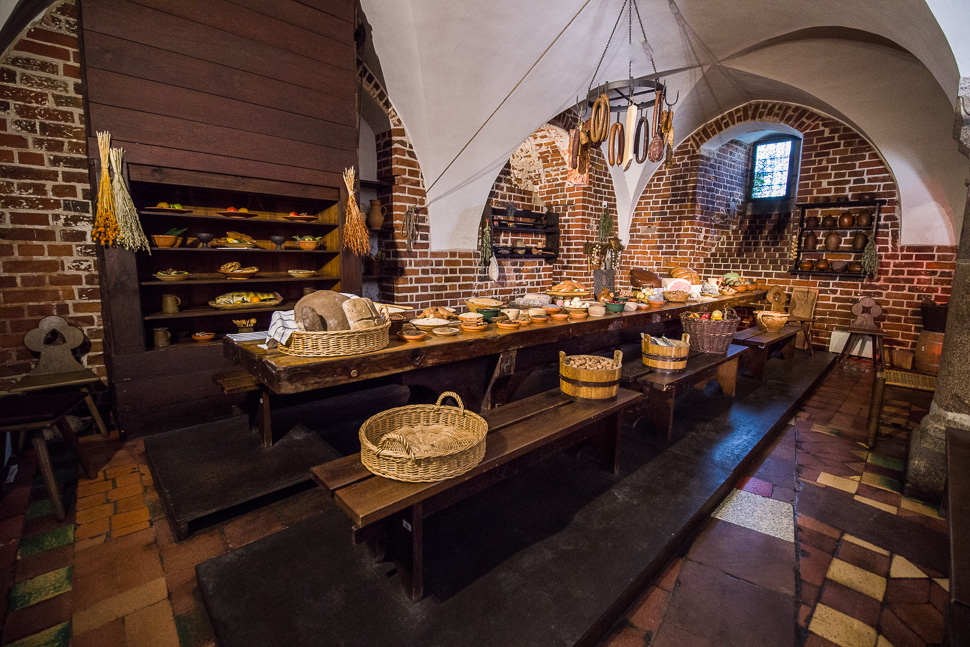 |
| Kitchen of the middle castle |
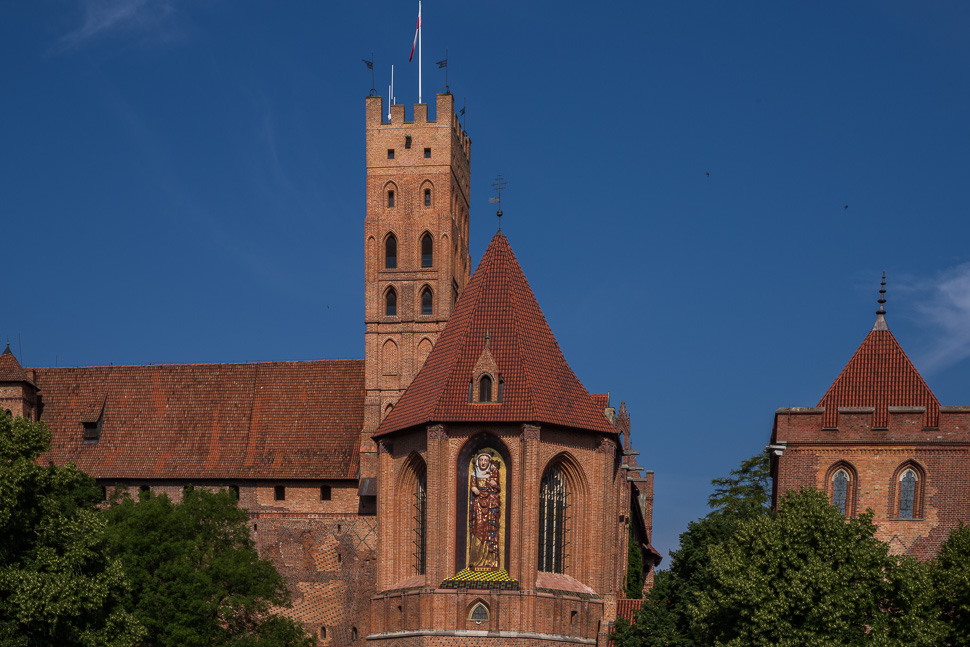 |
| 8 metres tall Mary at the outside of the church |
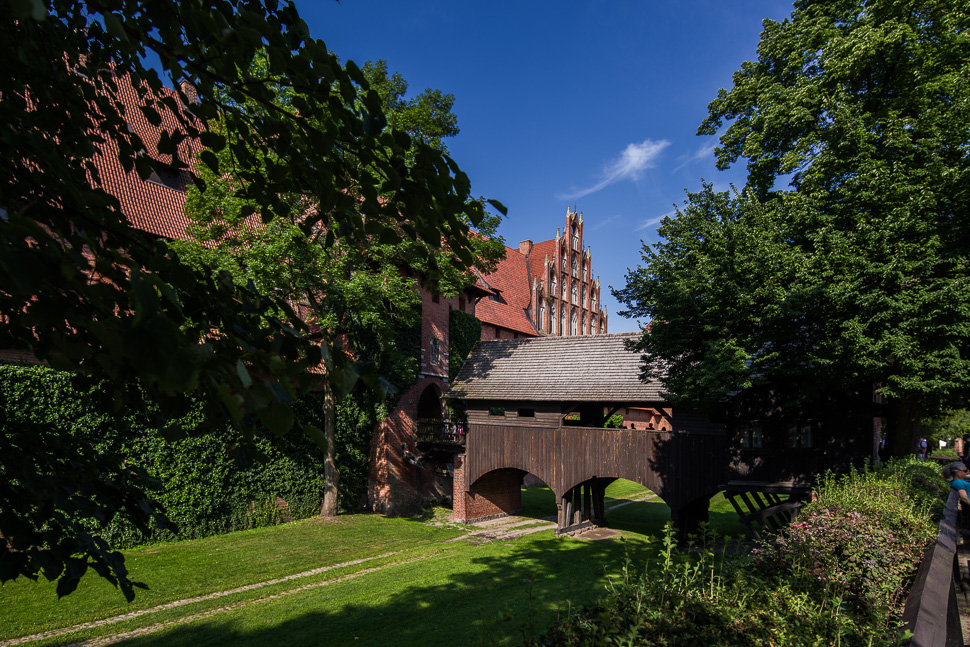 |
| Moat of the Middle Castle |
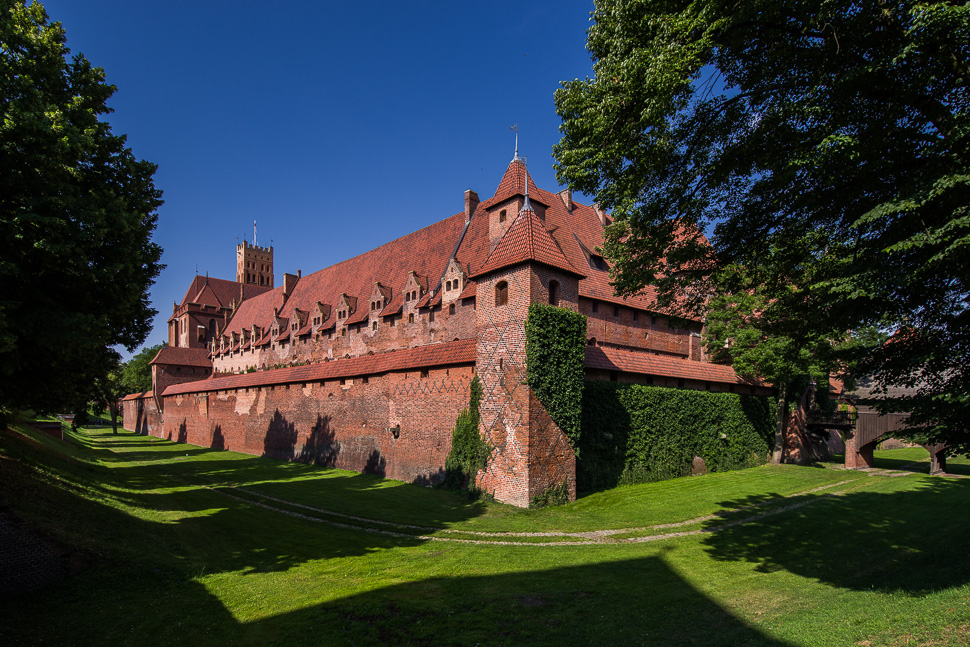 |
| Middle castle |
In the evening we celebrated our wedding anniversary with a nice dinner at the lake enjoying our last bottle of very delicious wine we had bought in Melnik, Bulgaria.

